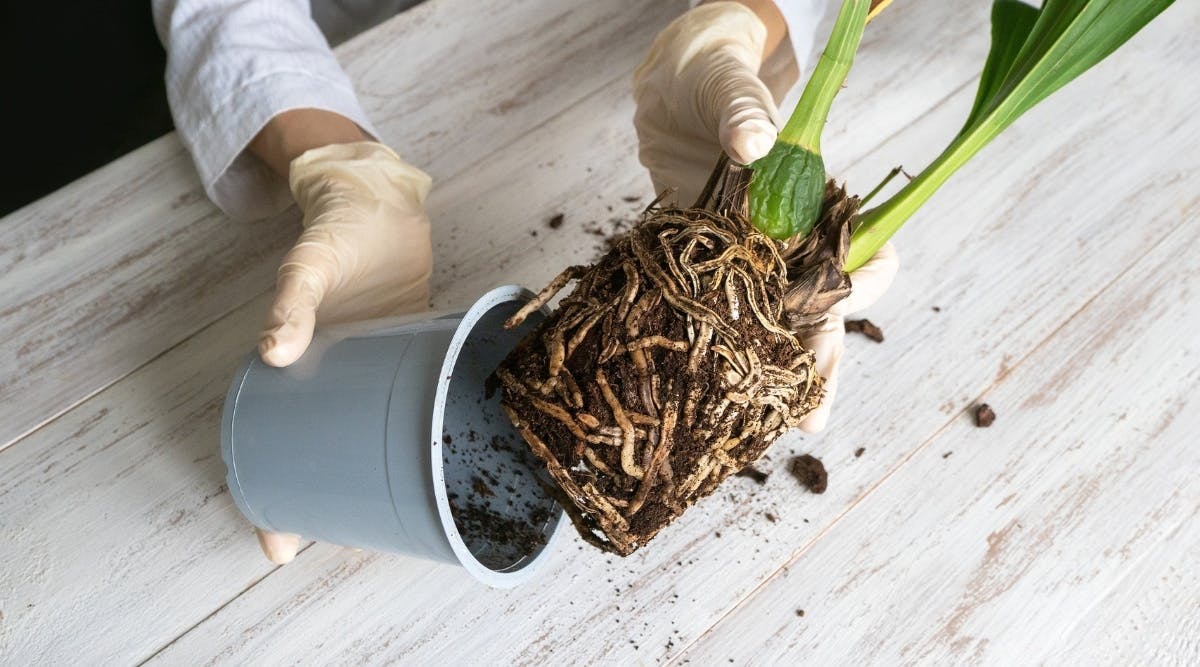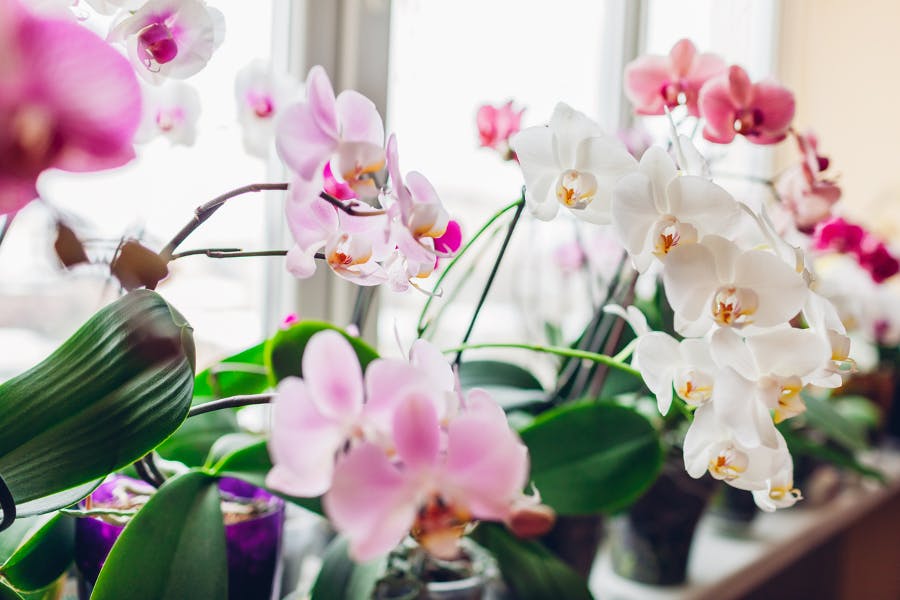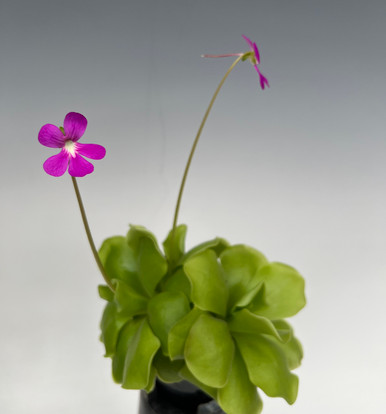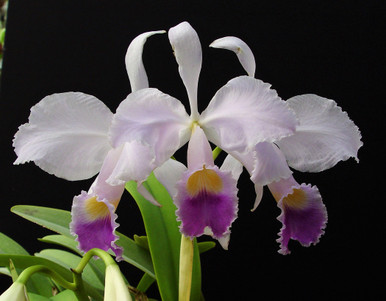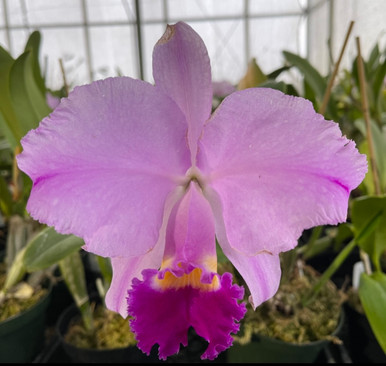Repotting Orchids: Tips and Tricks
If you are wondering how to repot your orchid, you've come to the right place. There are several different ways to repot, with different orchid varieties requiring different repotting techniques and potting materials. In general, most orchid plants that are growing in pots will break down the medium within one to two years. When repotting, remove the old mix from the pot, being careful not to break or crush too many roots. Hollow or mushy roots to the touch are considered dead and can be trimmed off. Roots that feel solid are generally the living roots. Rinse the root system thoroughly as this makes them more flexible, and cleans off the old potting medium so you can have a clearer look at the roots. Put the plant in a new pot (plastic or clay, depending on what type of orchid you have) carefully bending the aerial roots into the pot.
All orchids enjoy being rather root-bound, so make certain that there is only an extra inch or so for the roots to expand to in order to become root-bound again. You will likely crack some roots when you tuck them into the new pot and fill in with new medium.
This is inevitable and the plant should recover within a couple of weeks. In the case of using a bark medium (We highly recommend our Traditional Orchid Bark Mix), tap on the sides of the pot to help the medium settle into the pot. This reduced how much you need to press down on the medium to stable the plant. Having the plant being stable in the pot is essential for healthy growth. If the plant is loose and/or wobbly, it will most likely not grow well and should be reset into the pot.
For those using New Zealand sphagnum moss, we recommend using slightly damp moss and wrapping it around the roots lightly before placing it into the pot. This way you don't have to worry about air pockets in the bottom of the pot. After repotting, the plant sometimes needs to adjust from shock. One tip we recommend is not to water the plant for about 3 to 5 days. This will give the roots a chance to recover.
Can I repot my orchid when it is in spike or blooming?
Yes and no. It really depends on the condition of the plant and if it is necessary or not. First of all, we must confirm the difference between the phrases "in spike", "in bud" and "in bloom". If an orchid is "in spike", it has produced a stem that will eventually form buds and flower. If an orchid is "in bud", flower buds have emerged from the spike and could be anywhere from a few days to a month to bloom. Some orchids form the spike with buds emerging almost simultaneously. If an orchid is "in bloom", the flowers have emerged and are blooming.
If your orchid is in spike, you can repot as long as you are careful not to damage roots while repotting. There may be a couple of reasons that you want to repot while your orchid is in spike. These same reasons can apply to plants in bud or bloom.
The plant could be in drastic need of repotting. If this is the case, carefully clean away the old medium and try to avoid damaging roots. If the plant has a very poor root system to start out with and it is clearly suffering from stress, it is best recommended that you remove the flower spike as it is draining energy from the plant that could be used to help it recover.
You might want to repot it into a decorative pot before the plant blooms. If this is the case, to avoid shocking the plant, simply remove the plant and set it into the new pot without removing the old potting medium. This way you will avoid shocking the plant and it will continue its flowering schedule as usual.
If your orchid is in bud, you can repot it for the same reasons as if it was in spike. However, the risk of some (or all) buds being shocked and falling off is high. Orchids are much more forgiving if you repot when the buds have just formed and are "tight". For the most part, you should avoid repotting when in bud if it is not necessary.
If you repot when your plant is actually blooming, it is normal for the flowers to drop faster than normal, sometimes almost immediately. Only repot when blooming if you feel it is absolutely necessary.
